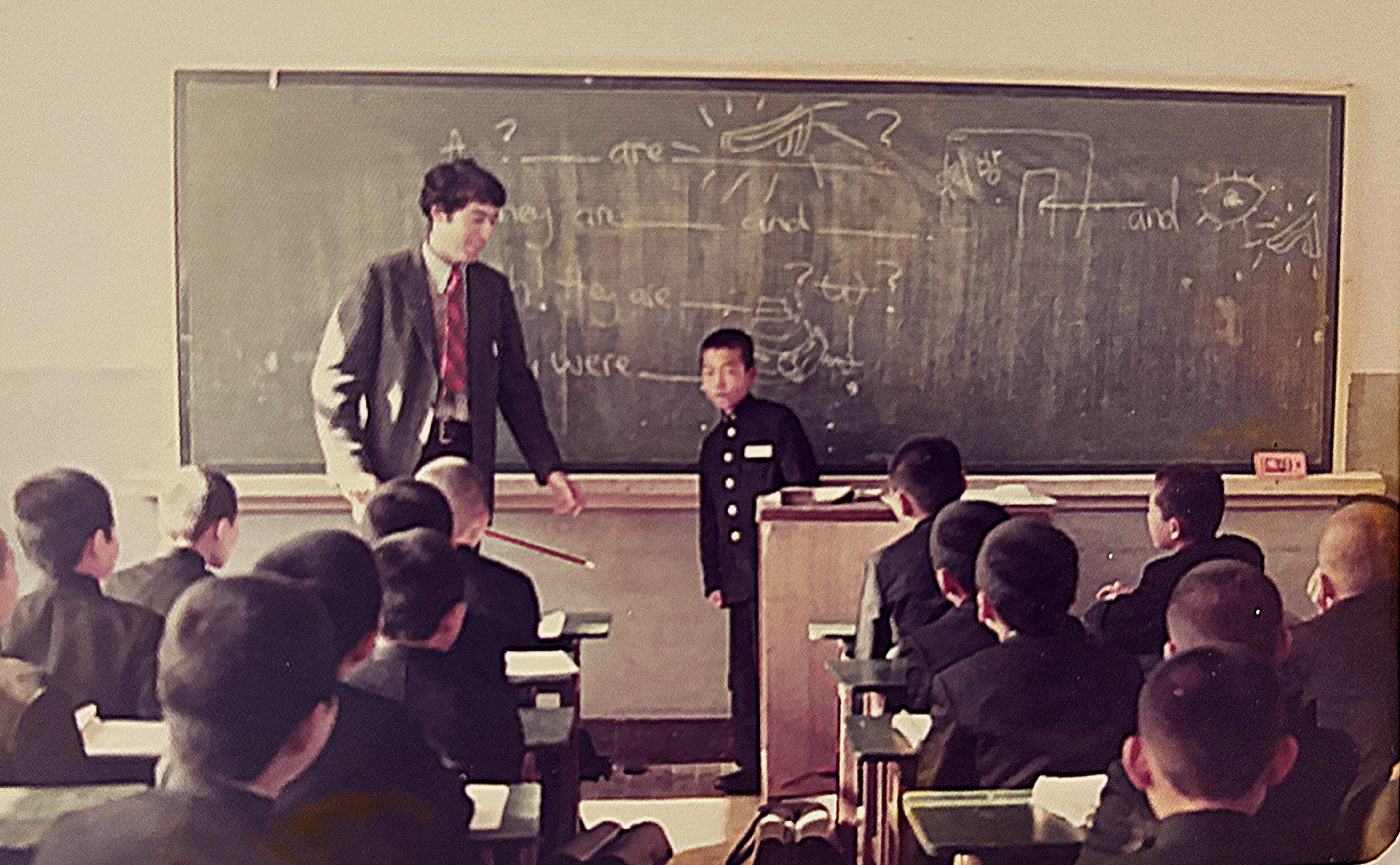Gwangju: After 50 Years – A Half-Century Comparison – February 2025
By Roger Higbie
2024 was a strange, and in some ways, a troubling year both in the United States and in Korea. But the thing that made it a remarkable year for me was my return to Gwangju (to me it will always be “Kwangju”) almost 50 years to the day after first stepping off the train from Seoul as a young U.S. Peace Corps volunteer.
My thoughts about the new Gwangju will be necessarily brief and impressionistic. I was only there for about 24 hours and a large portion of that time was spent in one location: my old school where I taught, Mudeung Middle School, located in Hak-dong. But I will let the changes I saw at my old school be symbolic of and stand in for the overall changes I thought I saw for the entire city: a transformation that was almost entirely positive and reflective of the growing abundance and sophistication of the new Gwangju.
The school was located exactly where it had been when I worked there, with the buildings and playing fields configured just as they were back then, a comfortable link to the past. But the school was now co-ed – what a welcome change and sensible improvement! When I taught at Mudeung, the only students were young men, and in fact there was hardly a female to be seen in the entire school except for the clerical staff (who did all the work). Now, besides the female students, faculty, and staff, there was also a female principal, the gracious Ms. Jeong Mi-seon. Surely, a learning environment more reflective of how the real world works can be nothing but an improvement.
In addition, the students wore their hair and dressed as they pleased (within reason); no more uniforms or buzz cuts. And the classes were half the size of those I taught in and were seemingly well-appointed with the latest audiovisual equipment and other devices. The new buildings were said to be air-conditioned, and there were even some elevators, but most striking and evocative was the presence of a teacher’s parking lot, and it was full! Whatever one thinks of the dubious addition of more and more gas-guzzling automobiles into the environment, the idea that middle school teachers now had the wherewithal to purchase cars and drive themselves to school or to wherever they wanted to go was to me a positive sign of a whole world of opportunities opening up to them and other Gwangju residents, including a chance for domestic and international travel.
Of course, I missed the rhythms and sights existing during my teaching experience at the school – like gathering around the potbelly stoves in every classroom, the rituals of greeting students and faculty in the morning, the views of the river and mountains from the front doorstep now covered up by buildings and signs. But I couldn’t help but think that the students were getting a much better, individualized, and more worldly education than what we were able to give them so many years ago, and I was happy for them. All in all, I felt a positive change had come to the school.
In the same way, although I missed the small- town feeling of the Gwangju I had lived in, with its walking streets, tabang (tearooms), classic structures, and centuries-old market rhythms, I felt the residents were better off now in the new Gwangju, exposed to the world, learning from it, and showing off their city. It had so much more of a cosmopolitan feeling to it, with cultural centers, international art shows, major sports events, fine hotels, and restaurants of all types. It seemed to be offering a more fulfilling life for its citizens.
One thing quite noticeable even with a short stay was the relatively large number of foreigners who are now making Gwangju their home, at least temporarily. Fifty years ago, one could almost count the entire international community just on one’s fingers; indeed, I can recall receiving someone else’s mail simply because the mailman would give it to the only foreigner he knew, with the full expectation that I would deliver it to the person it was intended for. Now, there seems to be expatriate bars, special schools, and holiday parties for a thriving international community, with only the presence of old friend Dave Shaffer, still there after 50 years (some things in Gwangju never change), to provide a link to the past.
Again, I think this is all to the good, introducing Gwangju to thousands of people from all over the world and exposing Gwangju’s citizens first-hand to every type of culture.
I would be remiss not to mention visiting the 5.18 Archives in Gwangju, and although it would be ridiculous to say that it was a pleasing aspect of the new Gwangju. At least we can say that this terrible event [the 1980 Gwangju Uprising] is clearly not being swept under the rug as things might have been, and probably were, in the 1960s and 1970s.
In sum, I would say I left Kwangju/Gwangju in an optimistic mood, convinced it is moving forward in a confident and deliberate manner and hoping to see it again, but this time in less than another 50 years!
Photograph by Roger Higbie.
The Author
Roger Higbie is from Madison, Wisconsin. After graduating from university, he joined the U.S. Peace Corps and taught English at Mudeung Middle School in Gwangju and then for one year at the Korea Legal Center in Seoul. After returning to the U.S., he studied law at the University of Wisconsin and worked as an attorney, practicing immigration law in New York City.





